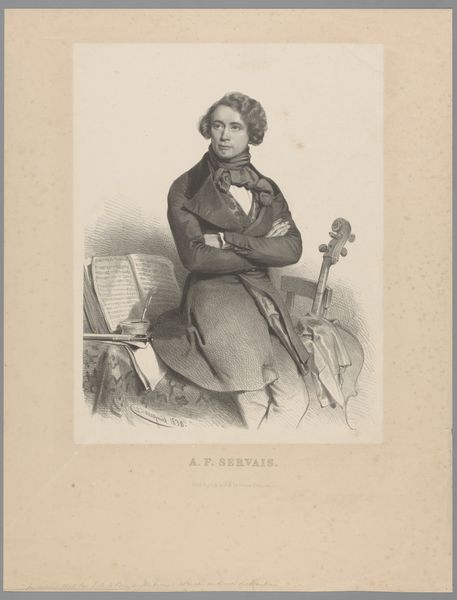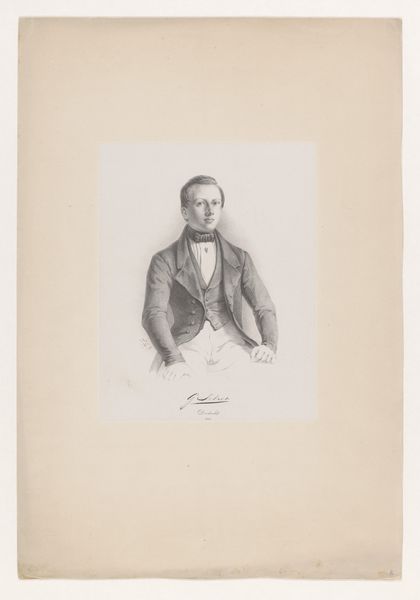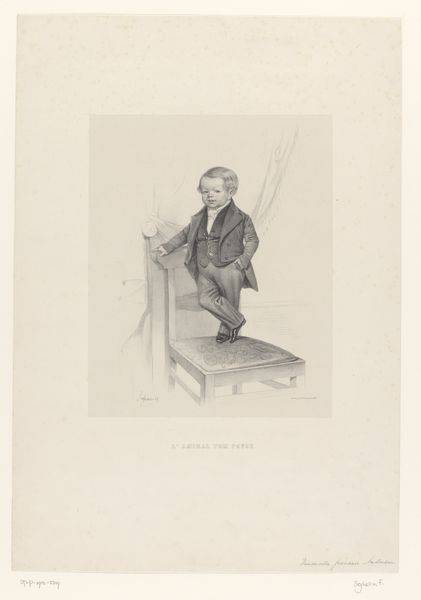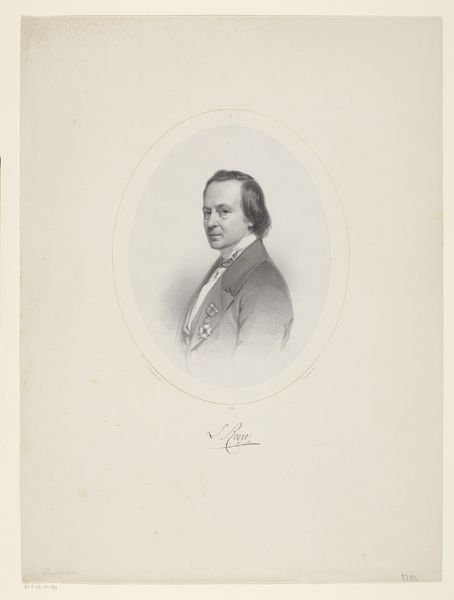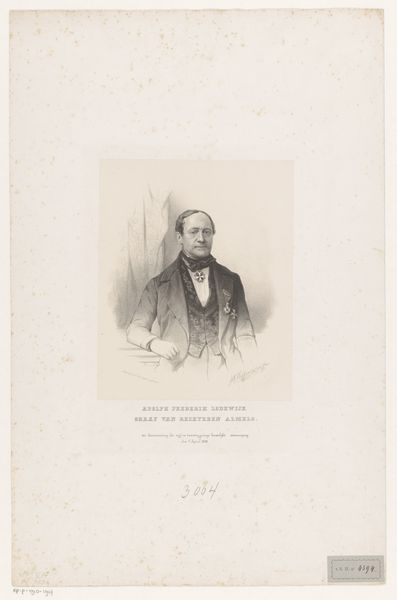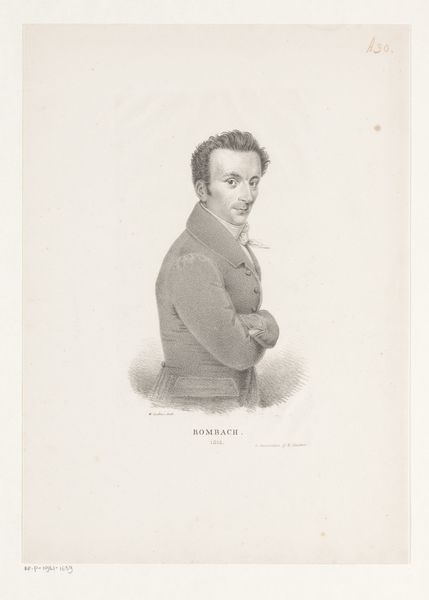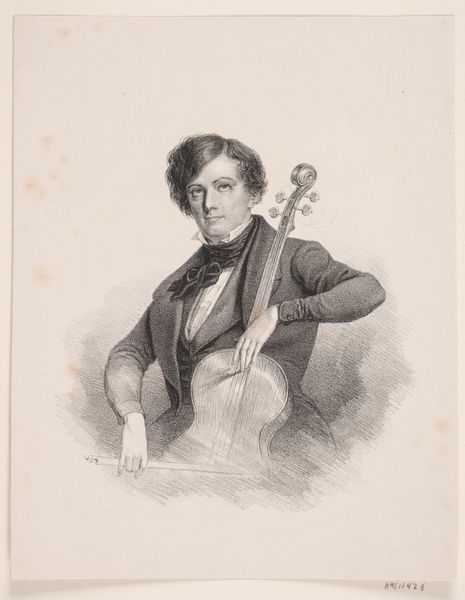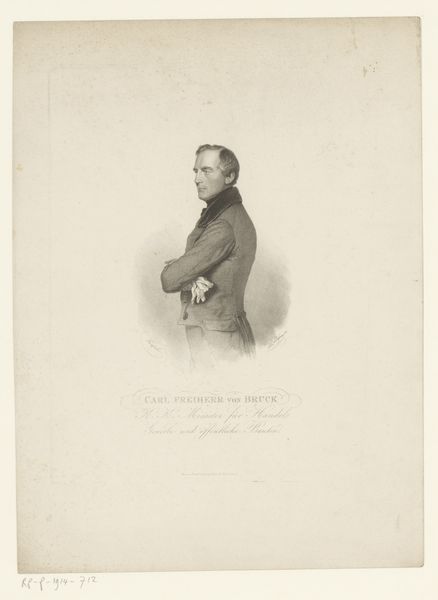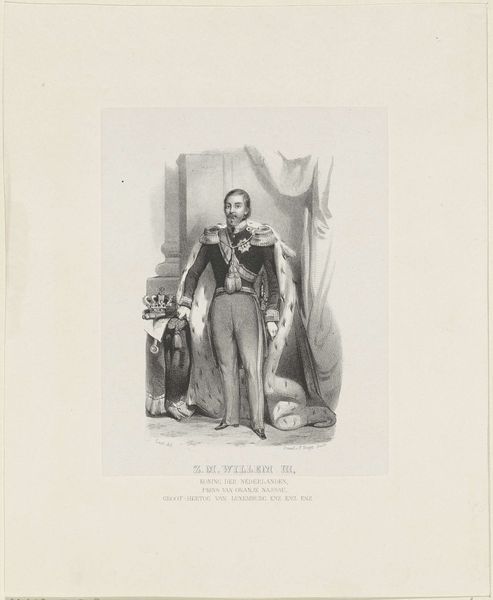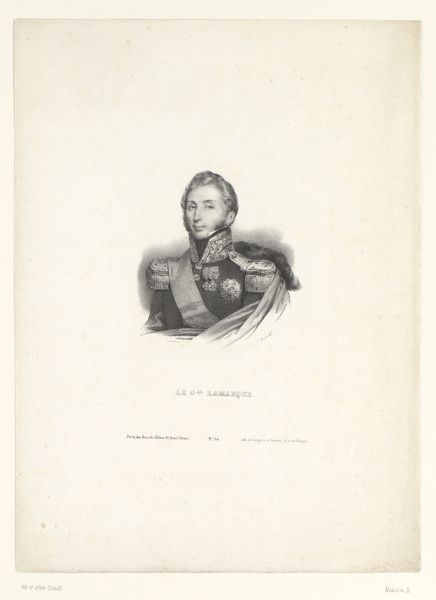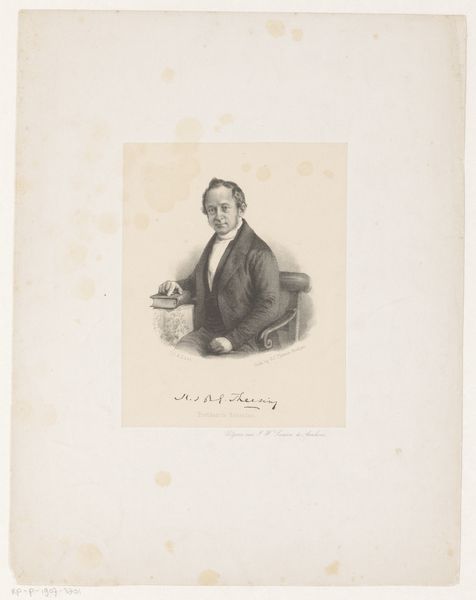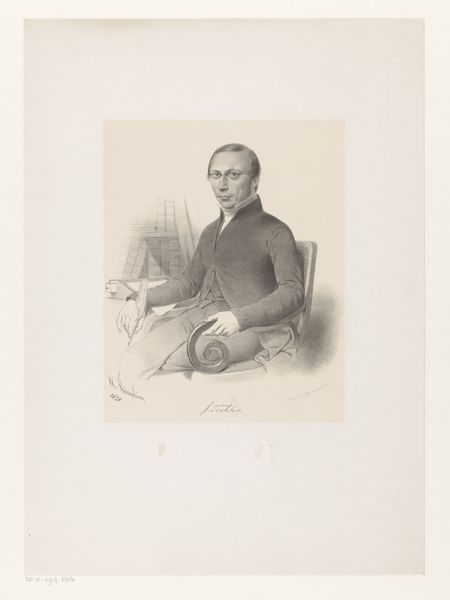
Dimensions: height 539 mm, width 365 mm
Copyright: Rijks Museum: Open Domain
Johan Heinrich Neuman created this portrait of Joseph Cramer using lithography, a printmaking technique that democratized image production in the 19th century. Lithography relies on the simple principle that oil and water do not mix. The artist draws an image with a greasy crayon onto a flat stone or metal plate. The stone is then treated with chemicals so that the image attracts oil-based ink, while the blank areas attract water and repel the ink. This allows for relatively quick and inexpensive reproduction of images. Notice the detailed rendering of Cramer’s face and clothing, as well as the subtle shading that gives the image depth. Lithography allowed for a level of detail previously only achievable through more laborious techniques like engraving. This print offered a wider audience access to portraiture, previously reserved for the wealthy. It reflects the shift towards mass production and consumption that defined the era.
Comments
No comments
Be the first to comment and join the conversation on the ultimate creative platform.
